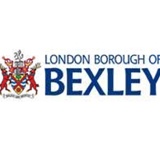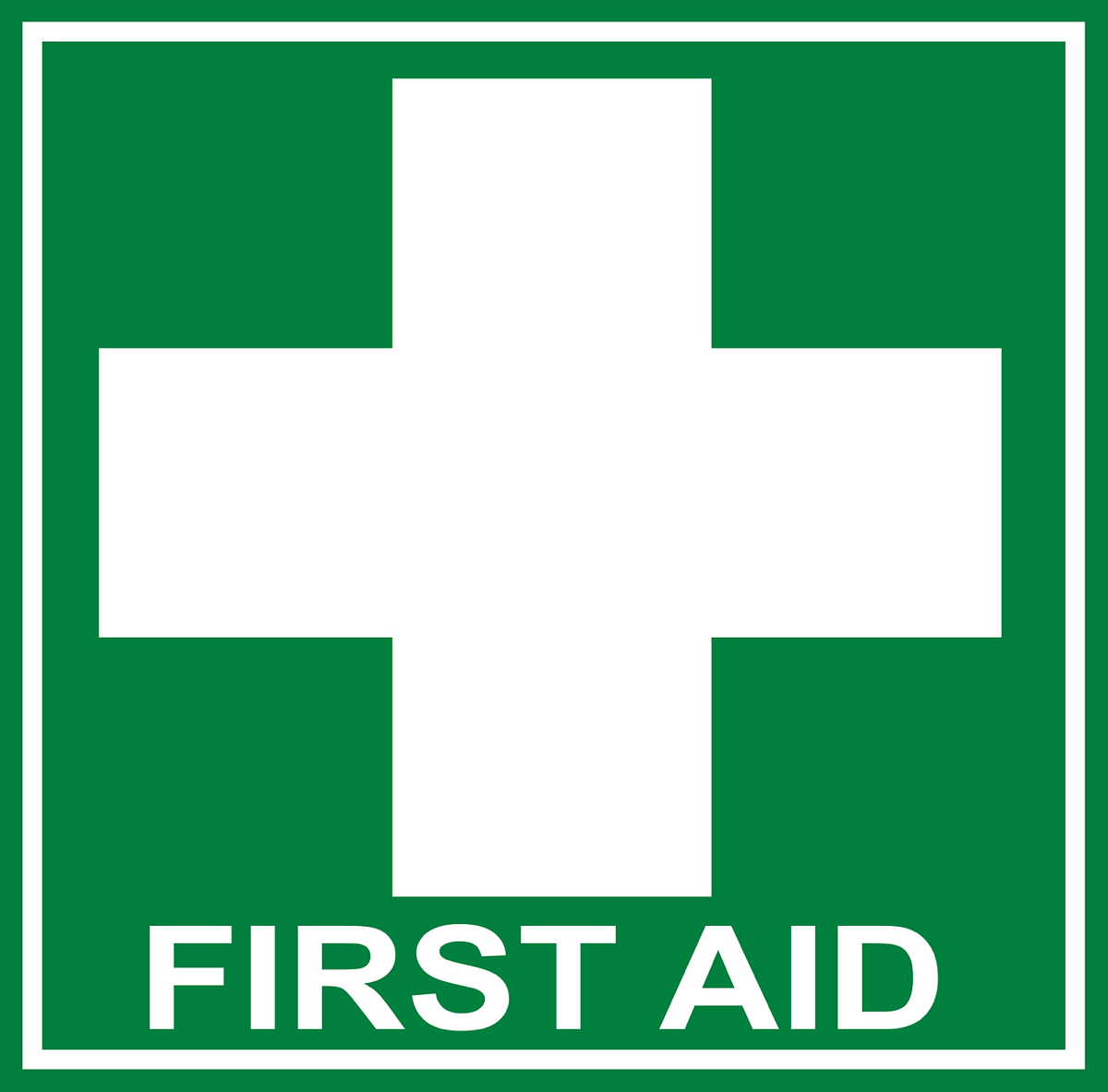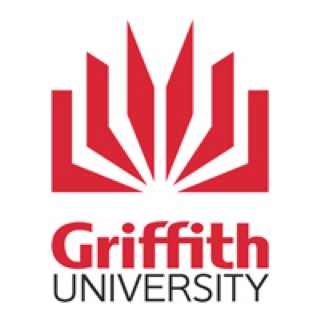Information
-
Document No.
-
Audit Title
-
Client / Site
-
Conducted on
-
Prepared by
-
Location
-
Personnel
-
Executive Summary • This section can be used to provide a brief summary of the report, to highlight the how the ASA was undertaken and to draw attention to any particular issues if required. • Be sure to direct the reader to: - Appendix 1: Summary Results of the Annual Safety Assessment and - Appendix 2: Action Plan. ENTER TEXT IN NEXT FIELD
-
Principal Signature:
-
Select date
Criterion 1: WORK HEALTH AND SAFETY POLICY
-
Open Guidance Information?
-
DETE has a comprehensive range of Workplace Health & Safety (WHS) policies, procedures and guidelines. They provide directives and guidance so that a high level of safety can be maintained at your workplace, and our legal obligations are met. It is important that the WHS requirements are met by all staff at your workplace. A copy of DETE's current Health, Safety and Wellbeing Policy Statement should be displayed at your workplace. All employees should: 1. Be aware of the range of DETE WHS procedures that exist 2. Know how to access DETE's WHS procedures 3. Integrate the requirements of these procedures into work practices. Important Links: • DETE Health, Safety and Wellbeing Policy Statement http://education.qld.gov.au/health/docs/orghealth-policy-statement.pdf • DETE Health and Safety procedure register http://ppr.det.qld.gov.au/corp/hr/workplace/Pages/current-procedures.aspx • Creating Healthier Workplaces website http://education.qld.gov.au/health/
-
Criterion Indicators are rated from 1 - NOT MET to 5 - FULLY MET
-
1. Management and staff know what DETE WHS policies and procedures apply, and are able to access them when required.
-
2. Management and staff are aware of their H&S responsibilities as outlined in relevant DETE WHS policies and procedures.
-
3. References are made to relevant DETE WHS procedures and guidelines in your school policy documents (e.g. staff handbook).
-
4. DETE's WHS procedure requirements are reflected in work practices (e.g. incident reporting, infection control, staff induction).
-
Current strengths and things we do well:
-
Issues of concern and recommendations for future improvement:
Criterion 2: MANAGEMENT RESPONSIBILITY
-
Open Guidance Information?
-
Guidance Health and safety at work is everyone’s responsibility. However, managers and supervisors have additional responsibilities for health and safety compliance. The H&S responsibilities of management staff are outlined in the relevant DETE policies and procedures. Principals and Institute Directors have broad responsibilities for health and safety at their workplace such as, establishing health and safety systems (e.g. incident reporting, risk management, induction training). Other management staff including Deputy Principals and Heads of Programs (i.e. HODs, HOSES, HOCs) also have particular H&S duties within their assigned area of responsibility. For DETE workplaces with over 30 workers a Workplace Health and Safety Advisor should be appointed and provided with training and support in accordance with the Workplace Health and Safety Advisors procedure. Management staff should: be aware of their H&S responsibilities outlined in DETE’s policies and procedures meet their responsibilities through their work practices. Important Links • Managing Health and Safety (Creating Healthier Workplaces website) http://education.qld.gov.au/health/safety/managing.html • Workplace Health and Safety Advisors procedure http://ppr.det.qld.gov.au/corp/hr/workplace/Pages/Workplace-Health-and-Safety-Officers.aspx
-
Criterion indicators are rated 1 - NOT MET to 5 FULLY MET
-
1.Management and staff know what DETE WHS policies and procedures apply, and are able to access them when required.
-
2.Management and staff are aware of their H&S responsibilities as outlined in relevant DETE WHS policies and procedures.
-
3.References are made to relevant DETE WHS procedures and guidelines in your school/TAFE Institute policy documents (e.g. staff handbook).
-
4.DETE’s WHS procedure requirements are reflected in work practices <br>(e.g. incident reporting, infection control, staff induction).
-
Current Strengths and things we do well:
-
Issues of concern and recommendations for future improvement:
Criterion 3: PLANNING PROCESSES
-
Open Guidance Information?
-
Guidance: Planning for WHS is fundamental to effective compliance with WHS legislation, policies and procedures. WHS planning involves: 1. Having proactive risk management processes in place. 2. Establishing processes to manage H&S issues before and as they arise (e.g. critical incident plans, emergency procedures, incident reporting). 3. Establishing staff induction and training programs. 4. Regularly reviewing the current Safety Action Plan to ensure safety issues are being addressed as intended. Workplace health and safety planning documents should: Identify foreseeable hazards, indicate their assessed risk and outline how they are to be controlled. Establish expectations for H&S processes, such as: training, risk management and incident reporting. Explain your workplace emergency procedures.
-
Criterion Indicators are rated from 1 - NOT MET to 5 - FULLY MET
-
1.Work activities are reviewed on a regular basis to identify hazards, assess their risk and implement safety controls.<br>
-
2.A Safety Action Plan is developed each year that prioritises hazards according to their risk and maps out actions to address those hazards.
-
3.Emergency plans exist for site evacuation, lockdown, medical emergencies and other foreseeable critical incidents.
-
4.Effective policies and processes have been established to address H&S issues such as: staff induction and training, risk management, incident reporting.<br>
-
Current Strengths and things we do well:
-
Issues of concern and recommendations for future improvement:
Criterion 4: CONSULTATION
-
Open Guidance Information?
-
Maintaining health and safety at work relies on meaningful consultation with all staff and other stakeholders (e.g. contractors). This consultation may occur through: an established Health and Safety Committee, an appointed Workplace Health and Safety Officer, elected staff Health and Safety Representatives, staff meetings, newsletters and less formal communication. Meaningful consultation will not only advise everyone concerned about H&S issues, but will also seek a broad range of views and input before decisions are made. Consultation should occur: during risk management processes (e.g. when hazards are being identified, risks assessed and when safety controls are being formulated and implemented) when investigating H&S incidents when planning changes to work policies and practices that affect safety when determining H&S training needs. Important Links • Health, Safety and Wellbeing Communication and Consultation procedure http://ppr.det.qld.gov.au/corp/hr/workplace/Pages/Health,-Safety-and-Wellbeing-Communication-and-Consultation.aspx • Health and Safety Representatives procedure http://ppr.det.qld.gov.au/corp/hr/workplace/Pages/Workplace-Health-and-Safety-Representatives.aspx • Committees and Consultation (Creating Healthier Workplaces website) http://education.qld.gov.au/health/safety/managing/committees.html
-
1.Formal means of consultation have been established to foster meaningful communication on H&S issues (e.g. H&S Committee, staff provided with an opportunity to elect a Health and Safety Representative).
-
2.The Health and Safety Committee meets at least four times a year.
-
3.Consultation on H&S issues happens in a meaningful way with a broad range of people.
-
4.Staff are advised of relevant H&S decisions and processes that are put in place.
-
Current Strengths and things we do well:
-
Issues of concern and recommendations for future improvement:
Audit part 1
Criterion 5: RISK MANAGEMENT
-
Open Guidance Information?
-
Effective health and safety risk management is fundamental to ensuring safety at work. All DETE staff should have an understanding of the health and safety risk management process and how it is applied to their work. Staff should understand and comply with relevant DETE risk management procedures. Instances where risk management would be required include: • High-risk curriculum activities • Contractors and visitors • Electrical safety • School/TAFE offsite activities (i.e. camps, vocational placement) • Chemical safety • Working at heights • Work experience • Infection control • Emergency planning • Manual handling • Slips, trips and falls • Driver safety Processes should be established at your workplace to: ensure staff understand the risk management process, relevant DETE risk management procedures and how they are to be implemented identify, assess and manage hazards in your workplace complete risks assessments for high and extreme risk health and safety hazards/activities. Important Links • Risk Management (Creating Healthier Workplaces website) http://education.qld.gov.au/health/safety/managing/risk.html • Managing Risks in School Curriculum Activities procedure http://ppr.det.qld.gov.au/education/management/Pages/Managing-Risks-in-School-Curriculum-Activities.aspx • Health and Safety procedures http://ppr.det.qld.gov.au/corp/hr/workplace/Pages/current-procedures.aspx
-
Criterion Indicators are rated 1 - NOT MET to 5 - FULLY MET
-
1. Risk management processes are in place that: <br>(a) identify health and safety hazards; (b) assess their level of risk; <br>(c) eliminate or control risk, and (d) monitor and review safety.
-
2. Risk assessments are completed for identified high and extreme risk hazards.
-
3. All staff are provided with relevant risk management training on a regular basis.
-
4. Identified hazards are recorded in a central register (e.g. MyHR WH&S).
-
Current Strengths and things we do well:
-
Issues of concern and recommendations for future improvement:
Criterion 6: HEALTHY LIFESTYLE PROGRAM
-
Open Guidance Information?
-
Healthy lifestyle programs provide staff with information and skills to help them maintain good health and wellbeing. These programs should be based on health issues identified through a needs assessment done with your local staff. Ideally, a range of programs would be implemented to cater for a variety of individual needs. Implemented programs should be evaluated to determine their success. This could be based on participation, satisfaction levels, improvements to health and wellbeing, etc. Healthy lifestyle programs should be: implemented to cater for a diverse range of identified needs evaluated to determine their effectiveness. Important Link • Health and Wellbeing Information (Creating Healthier Workplaces website) http://education.qld.gov.au/health/healthpromotion/health-wellbeing-info.html
-
Criterion Indicators are rated 1 - NOT MET to 5 - FULLY MET
-
1. Needs and preferences for healthy lifestyle programs are assessed.
-
2. A broad range of healthy lifestyle initiatives are promoted and implemented.
-
3. Healthy lifestyle programs are evaluated to determine their effectiveness.
-
4. Healthy lifestyle programs are included in the annual planning process.
-
Current Strengths and things we do well:
-
Issues of concern and recommendations for future improvement:
Criterion 7: INFORMATION, INSTRUCTION AND TRAINING
-
Open Guidance Information?
-
For staff to maintain a safe work environment in accordance with DETE’s policies and procedures, they need to be provided with ready access to up-to-date information and quality H&S training. All staff should receive regular training in workplace emergency procedures (such as, evacuations and lockdowns), and key H&S procedures (such as, incident reporting and risk management). H&S topics should be included in induction programs for all staff upon their initial appointment to your workplace or their return from extended leave. More specific H&S training should be provided to staff based on their role. For example, Cleaners and Grounds Staff may receive training regarding manual handling risks and managing hazardous chemicals. Records of the training undertaken should be maintained. All staff should: receive H&S induction training upon their appointment receive H&S training relevant to their work role and duties (refer to H&S procedures for information). Important Link • Courses and Training (Creating Healthier Workplaces website) http://education.qld.gov.au/health/training.html
-
Criterion Indicators are rated 1 - NOT MET to 5 - FULLY MET
-
1.Health and safety induction training is provided for newly appointed staff and for staff returning from extended leave.<br>
-
2.Staff are provided with health and safety training that relates to their role.
-
3.Health and safety training records are maintained.
-
4.Health and safety training is based on a needs analysis of training requirements.
-
Current Strengths and things we do well:
-
Issues of concern and recommendations for future improvement:
Criterion 8: INJURY TREATMENT AND MANAGEMENT
-
-
Injury treatment is aimed at providing an immediate response to work injuries. Often, injury treatment is provided through First Aid. To enable this, appropriate First Aid facilities and sufficient staff with current First Aid and CPR training are required at the workplace. Injury management focuses on facilitating the early and safe return to work of staff who have been ill or injured. This may require a return to work (RTW) program for seriously injured staff. Such a program should be developed and monitored by an accredited Rehabilitation and Return to Work Coordinator (RRTWC). All workplaces need a RRTWC appointed. Larger workplaces (e.g. 30+ staff) should have a trained RRTWC on staff. Smaller workplaces should have arrangements to access a RRTWC located at another DETE workplace for if, or when required. Staff should be aware of their responsibilities and the RTW services available to them in the event of them being ill or injured. Important Links • Workplace Rehabilitation procedure http://ppr.det.qld.gov.au/corp/hr/workplace/Pages/Workplace-Rehabilitation.aspx • Injury Management (Creating Healthier Workplaces website) http://education.qld.gov.au/health/injury/index.html • First Aid procedure http://ppr.det.qld.gov.au/corp/hr/workplace/Pages/First-Aid.aspx • First Aid (Creating Healthier Workplaces website) http://education.qld.gov.au/health/safety/hazards/firstaid.html
-
Criterion Indicators are rated 1 - NOT MET to 5 - FULLY MET
-
1.Appropriate First Aid facilities and sufficient trained staff are available.
-
2.Staff have a good understanding of their role in the rehabilitation process.
-
3.The workplace has appointed an accredited RRTWC.<br>
-
4.Staff RTW plans are implemented when required. (If no RTW plans have been required, then the RTW process is understood by Admin staff.)
-
Current Strengths and things we do well:
-
Issues of concern and recommendations for future improvement:
Audit part 2
Criterion 9: CLAIMS MANAGEMENT
-
Open Guidance Information?
-
Claims management refers to the management of: WorkCover claims, QSuper income protection claims and long term sick leave for ill or injured staff. Claims should be managed in an accurate and timely manner, and in a way that respects and upholds the rights and responsibilities of both the employee and DETE. Effective claims management can be achieved with a range of people working together, including: • the injured/ill employee • your workplace Administration team • the accredited RRTWC assigned to manage the case • Regional staff including the Claims Officer and the Senior Injury Management Consultant • Case Managers from WorkCover and/or QSuper. Important Links • Workplace Rehabilitation procedure http://ppr.det.qld.gov.au/corp/hr/workplace/Pages/Workplace-Rehabilitation.aspx • WorkCover, QSuper and Other Claims (Creating Healthier Workplaces website) http://education.qld.gov.au/health/injury/workcover.html • Injury Management (Creating Healthier Workplaces website) http://education.qld.gov.au/health/injury/index.html
-
Criterion indicators are rated 1 - NOT MET to 5 - FULLY MET
-
1. Staff understand their rights and responsibilities in relation to the lodgement of claims and leave.
-
2. All claims are managed in a timely and efficient manner. If no claims have needed to be managed, the claims process understood by Admin staff.<br>
-
3. Files containing claim and leave paperwork are kept secure and confidential.
-
4. Staff have ready access to information about claims and leave options.
-
Current strengths and things we do well:
-
Issues of concern and recommendations for future improvement:
Criterion 10: INCIDENT RECORDING, INVESTIGATION, ANALYSIS AND REVIEW
-
Open Guidance Information?
-
A health and safety ‘incident’ is an accident or event that has resulted in an injury, or had the potential to result in an injury (like a near miss). Incidents should be recorded and reported in accordance with the Health and Safety Incident Recording and Notification procedure. For schools and offices with access to MyHR, incident and investigation details are to be recorded in the MyHR WHS module. Incidents should be investigated in accordance with the Health and Safety Incident Investigation procedure. Your workplace should have staff (or access to staff) trained in incident investigation. Incident statistics should be reviewed and analysed on a regular basis (at least annually) with the view to reducing the risk of similar incidents happening in the future. This could be undertaken by the Workplace Health and Safety Committee, with the findings and responses communicated to all relevant staff. Important Links • Health and Safety Incident Recording, Notification and Management procedure http://ppr.det.qld.gov.au/corp/hr/workplace/Pages/Health-and-Safety-Incident-Recording,-Notification-and-Management.aspx • Health and Safety Incident Investigation procedure http://ppr.det.qld.gov.au/corp/hr/workplace/Pages/Health-and-Safety-Incident-Investigation.aspx
-
Criterion indicators are rated 1 - NOT MET to 5 - FULLY MET
-
1. Management and staff are aware of their responsibility to report H&S incidents in accordance with the Incident Recording procedure.
-
2. Health and safety incidents are recorded in accordance with the Incident Recording procedure.<br>
-
3. Health and safety incidents are investigated in accordance with the Incident Investigation procedure.
-
4. Actions are undertaken in response to regular review and analysis of incident statistics.
-
Current strengths and things we do well:
-
Issues of concern and recommendations for future improvement:
Criterion 11: MEASURING AND EVALUATING WHS PERFORMANCE
-
Open Guidance Information?
-
A key activity to measure and evaluate your workplace H&S performance is through an Annual Safety Assessment (ASA). The ASA should: • review the 13 DETE health, safety and wellbeing criteria • consult with a broad range of staff • be conducted annually • result in an annual Safety Action Plan (see Appendix 2) which prioritises the safety measures to be undertaken over the next 12 months in response to issues identified in the ASA • inform priorities to be included in annual operational plans. Other steps may be taken to review WHS performance, such as: specific work site inspections, undertaken for high-risk areas on a regular basis analysis of H&S statistics (such as: WorkCover claims, MyHR WHS injury data, incident reports, identified hazards, risk assessments) review of actions taken in response to identified issues.
-
Criterion indicators are rated 1 - NOT MET to 5 - FULLY MET
-
1. An ASA is conducted each year.
-
2. A Safety Action Plan is developed that outlines prioritised actions to be undertaken in response to the ASA findings.
-
3. A broad range of H&S data is reviewed on a regular basis.
-
4. Work site inspections for high-risk areas are undertaken on a regular basis.
-
Current strengths and things we do well:
-
Issues of concern and recommendations for future improvement:
Criterion 12: REVIEWING WHS PERFORMANCE
-
Open Guidance Information?
-
We all have a duty to provide a high level of safety at work, in accordance with WHS legislation and DETE policies and procedures. The H&S practices at your workplace should be reviewed to ensure they meet current legislative and DETE requirements. Sometimes processes need to be updated to reflect other legislation (for example, building fire safety legislation). From time to time, external WHS management system audits are conducted at DETE workplaces. The criteria used in this ASA align closely to those used in the external WHS audit. More information is provided in the Health, Safety and Wellbeing Management Systems Audits procedure (link below). Management staff should: Review your WHS practices to ensure they comply with DETE procedures and legislation. Ensure staff are aware of current WHS policies and procedures. Ensure there is compliance with the WHS policies and procedures. Important link: Health, Safety and Wellbeing Management Systems Audit Procedure - https://ppr.det.qld.gov.au/corp.hr/workplace/Pages/Health,-and-Safety-and-Wellbeing-Management-Systems-Audit.aspx
-
Criterion indicators are rated 1 - NOT MET to 5 - FULLY MET
-
1. WHS policies and procedures are reviewed on a regular basis.
-
2. WHS policies and procedures are updated as required.
-
3. Staff are advised of changes to WHS policies and procedures.
-
4. Current WHS policies and procedures are reflected in planning processes and activities.
-
Current strengths and things we do well:
-
Issues of concern and recommendations for future improvement:
Criterion 13: REPORTING OF WHS
-
Open Guidance Information?
-
DETE workplaces are required to maintain records of WHS issues and activities. For example: • Hazards and incidents are recorded in a central register (e.g. MyHR WHS, TAFE risk registers). • WHS training records are maintained. • The results of the ASA are reported to the Health and Safety Committee and the Admin/Leadership team. Management staff should: Monitor WHS reporting to determine that it is an accurate reflection of your workplace. Maintain all the records required for audits on Health and Safety processes.
-
Criterion indicators are rated 1 - NOT MET to 5 - FULLY MET
-
1. The results of the ASA are reported each year.<br>
-
2. Central registers of hazards and incidents are maintained.<br>
-
3. WHS training records are maintained.<br>
-
4. All records required for Health and Safety audits are maintained.<br>
-
Current strengths and things we do well:
-
Issues of concern and recommendations for future improvement:
Appendix 1: Summary
SUMMARY RESULTS OF THE ANNUAL SAFETY ASSESSMENT 2014
-
Location:
-
Safety Assessment compiled by:
-
Select date
-
1. Work Health and Safety Policy
-
2. Management Responsibility
-
3. Planning Processes
-
4. Consultation
-
5. Risk Management
-
6. Healthy Lifestyle Program
-
7. Information, Instruction and Training
-
8. Injury Treatment and Management
-
9. Claims Management
-
10. Incident recording, Investigation, Analysis and review
-
11. Measuring and Evaluating WHS Performance
-
12. Reviewing WHS Performance
-
13. Reporting of WHS
-
Top 3 issues of concern with key actions to be taken:
-
Officer in Charge - signature and date:
-
Add signature
-
Select date











